Interview with KTM's Stefan Pierer – Part 2
Pierer's thoughts on MV Agusta
Alan Cathcart’s conversation with Stefan Pierer continues, as the PIERER Mobility president and chief executive officer discusses his motorcycle brands (namely, KTM, Husqvarna and GasGas), and some of their competition. This includes MV Agusta, of which PIERER gained a stake in 2022. —ED.
Interview with KTM’s Stefan Pierer – Part 1
Interview with KTM’s Stefan Pierer – Part 3
Alan Cathcart: Let’s talk about MV Agusta, where last November you purchased 25.1% of the equity from its present owner, Timur Sardarov. What is your future strategy for your involvement in the brand?
Stefan Pierer: As part of that 25.1%, it’s taking the first step of working together very closely on current production models. So we’ll take care of the whole supply chain, we’ll buy all the parts needed for MV Agusta’s production for the coming year, and then, after finalizing that, we’ll take over worldwide distribution of the finished product. This is the first step to help them make their entire operation profitable as a company.
AC: To begin with though, presumably your involvement will not only be MV Agusta’s supply chain and distribution, but also certain product development strategies, such as – should they be making the Lucky Explorer 9.5 and 5.5?
SP: You’re right, nobody needs those, and especially not branded with that name. Adventure bikes are a big market sector, but they’re also the most difficult segment, and the most competitive to be present in. Nobody is waiting for such a model from MV Agusta.
AC: Except, do you think that if you branded such a bike as an MV Agusta, and made it a two wheeled Range Rover, so purely a high performance luxury road bike, would there perhaps be a market for that?
SP: Possibly, but in my opinion, before you enter a new sector with something as radically different as this by MV Agusta standards, first and foremost you have to get those product segments right which the MV Agusta brand really stands for. And there is a lot to do there, believe me.
AC: So what kind of products do you think MV Agusta should be making?
SP: Where MV Agusta’s coming from, it’s high end. I wouldn’t say luxury, but it’s premium high end. I think the Brutale would be a good basis for some very nice developments, but for me, the model that still captures the essence of MV Agusta is the F4. When it first appeared 25 years ago it had so many nice details – it was perfect, and very beautiful. But I would say that style got lost in the last decade, because they had other problems to worry about, and Tamburini was no longer making the bikes, too. But just to give you some new information, our colleague Gerald Kiska is going to set up a subsidiary Kiska Design studio in Varese, within the MV Agusta factory.
SP: That is absolutely correct.
AC: Must MV Agusta have more than just high-end niche models – do you believe they need to have the 800cc three cylinder range in order to be able to generate volume?
SP: Sure, besides the high end we must have premium middleweight models. Their new three-cylinder engine, the 920, 950, it’s a very good engine, but now we have to make it compliant for Euro 5.2, which is a little bit tricky, but yes, it’s clear. What we are also experiencing in the market, is that a lot of the big displacement owners in the high end class are stepping down to smaller capacity models, because they’re getting older, so the weight of the bike, and the rideability, the handling, it all becomes easier. I met several guys who stepped down from a 1290 Super Adventure to a 390 Adventure because of this.
AC: So, for that reason do you think a 390 Adventure or a 590 Adventure made in China with the MV Agusta name will be OK?
SP: No, don’t even think about such a thing, never ever! It must stay premium in terms of capacity as well as design, and provenance. All MV Agustas must be made in Italy, and the smallest capacity will be the 900 three-cylinder.
AC: However, let me go back again to the two wheeled Range Rover, your customers are getting older, so they want something that is more comfortable, still with high performance.
SP: That’s the reason that the Adventure segment is growing so nicely.
AC: Exactly – so an MV Agusta Range Rover, would be a valid product.
SP: Yes, but before you launch such a model you have to win back the credibility about where you’re coming from, instead of doing new things which are not part of the brand’s heritage.
AC: Brough Superior and Aston Martin have shown that it’s viable to charge 108,000 Euro for each example of a 100-bike line of ultra-deluxe beautifully designed motorcycles carrying a historic badge, and sell every one. Is this something you feel MV Agusta should be looking at?
SP: Yes, I do. We have done a similar joint project with Brabus in Germany with the KTM Super Duke R Evo where all 290 examples sold out online in one minute and 55 seconds flat at 42,500 Euro each! Very impressive – and to that extent, for sure, sooner or later that’s what I see MV Agusta as doing, after we have stabilized the core program.
AC: Do you believe that MV Agusta must go racing?
SP: No – and especially not with a three-cylinder Triumph engine in its Moto2 bike!
AC: Will KTM engineers assume responsibility for future development of the technical aspect of MV Agusta products?
SP: Yes, for sure, we’ve already helped them on engines from Day One of our partnership, and this will expand considerably in future.
AC: Is PIERER Mobility interested in deploying its current financial strength to enter other sectors of the motorcycle industry via acquisition? So, for example, if it ever became available would you be interested in acquiring Moto Guzzi from Piaggio to cover your lack of a Cruiser range?
SP: We currently have enough on the table to do with motorcycle brands in repairing MV Agusta, and developing GASGAS as an on-road manufacturer – so that’s sufficient for the time being! Anyway, another huge task is to become a global player in the E-bicycle business. Having said that, for sure, any new acquisition could take place if the price tag is right, and if the momentum is there.
AC: How do you feel about Triumph, and also apparently Ducati going Motocross racing against KTM and GASGAS?
SP: Yes, that’s the other side of the coin, if you’re a public company for many years, you have to report and release everything, so then our competitors start seeing what huge success we have, and say, let’s follow them. OK, let’s see, I like competition! Their investing in that off-road market means it will expand as more people around the world become aware of it. But we have so many projects to take care of, and building our new North American headquarters in Murrieta, California, was the biggest single investment I ever yet made.
SP: $48 million with 10 hectares of land, a new distribution centre which sets a new standard for the whole US market, even for the Japanese. We’re selling 100,000 units annually in the USA, so more than one billion dollars in sales, and we have overtaken Yamaha in sales volume last year.
AC: So what are your projections for PIERER Mobility in the next five years? Where do you want the company to be in 2028?
SP: I’m looking at achieving a four billion Euro turnover by 2028, with three billion Euro in the short-term, hopefully this year. Look back at where we’re coming from – every year on average we’ve grown by 15% or better. That’s very satisfying.
AC: That’ll presumably mean taking market share from the Japanese companies to do it?
SP: Whoever!
The interview with Stefan Pierer continues in part 3, as he discusses electrification and synthetic fuels.
Become a Motorcycle.com insider. Get the latest motorcycle news first by subscribing to our newsletter here.
A man needing no introduction, Alan Cathcart has ridden motorcycles since age 14, but first raced cars before swapping to bikes in 1973. During his 25-year racing career he’s won or been near the top in countless international races, riding some of the most revered motorcycles in history. In addition to his racing resume, Alan’s frequently requested by many leading motorcycle manufacturers to evaluate and comment on their significant new models before launch, and his detailed feature articles have been published across the globe. Alan was the only journalist permitted by all major factories in Japan and Europe to test ride their works Grand Prix and World Superbike machines from 1983 to 2008 (MotoGP) and 1988 to 2015 (World Superbike). Winner of the Guild of Motoring Writers ‘Pierre Dreyfus Award’ twice as Journalist of the Year covering both cars and bikes, Alan is also a six-time winner of the Guild’s ‘Rootes Gold Cup’ in recognition of outstanding achievement in the world of Motorsport. Finally, he’s also won the Guild’s Aston Martin Trophy in 2002 for outstanding achievement in International Journalism. Born in Wales, married to Stella, and father to three children (2 sons, 1 daughter), Alan lives in southern England half an hour north of Chichester, the venue for the annual Goodwood Festival of Speed and Goodwood Revival events. He enjoys classic cars and bikes, travel, films, country rock music, wine - and good food.
More by Alan Cathcart








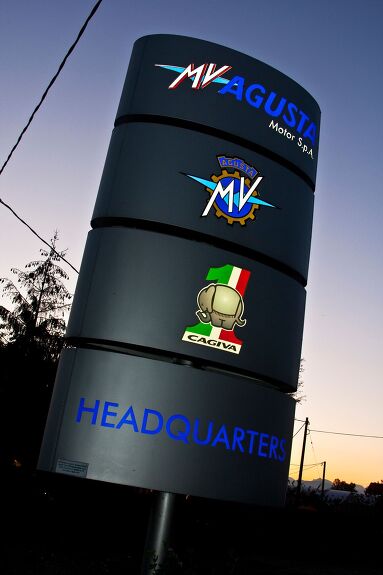

















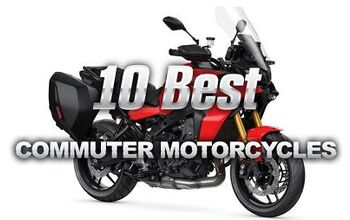



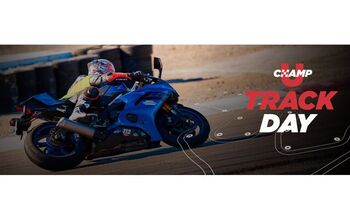


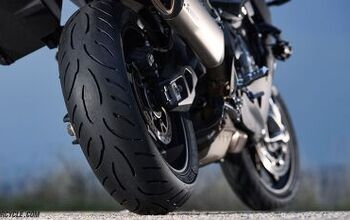

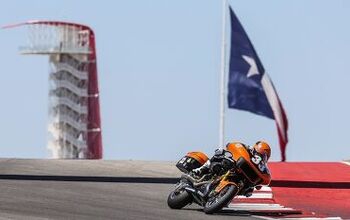







Comments
Join the conversation